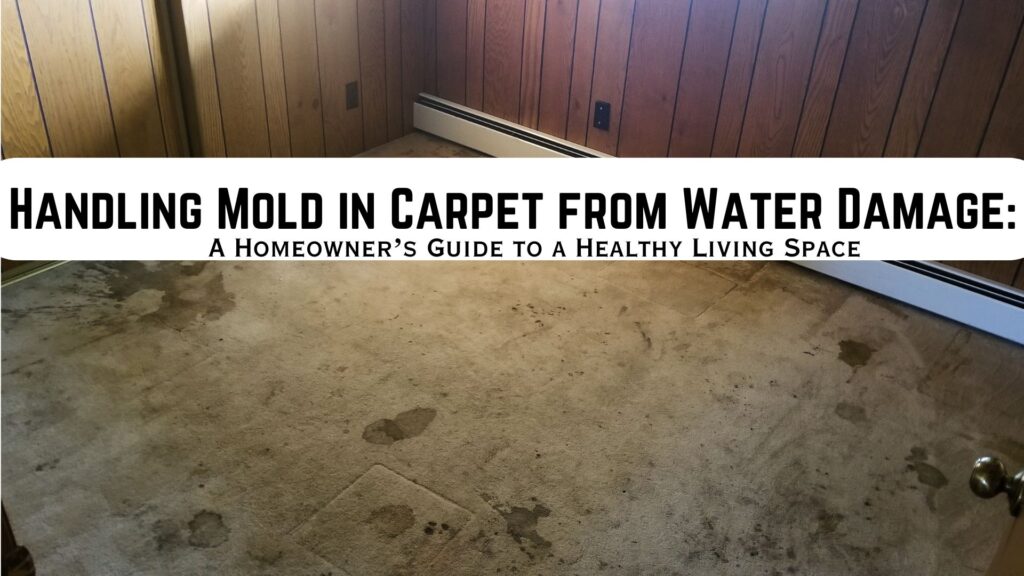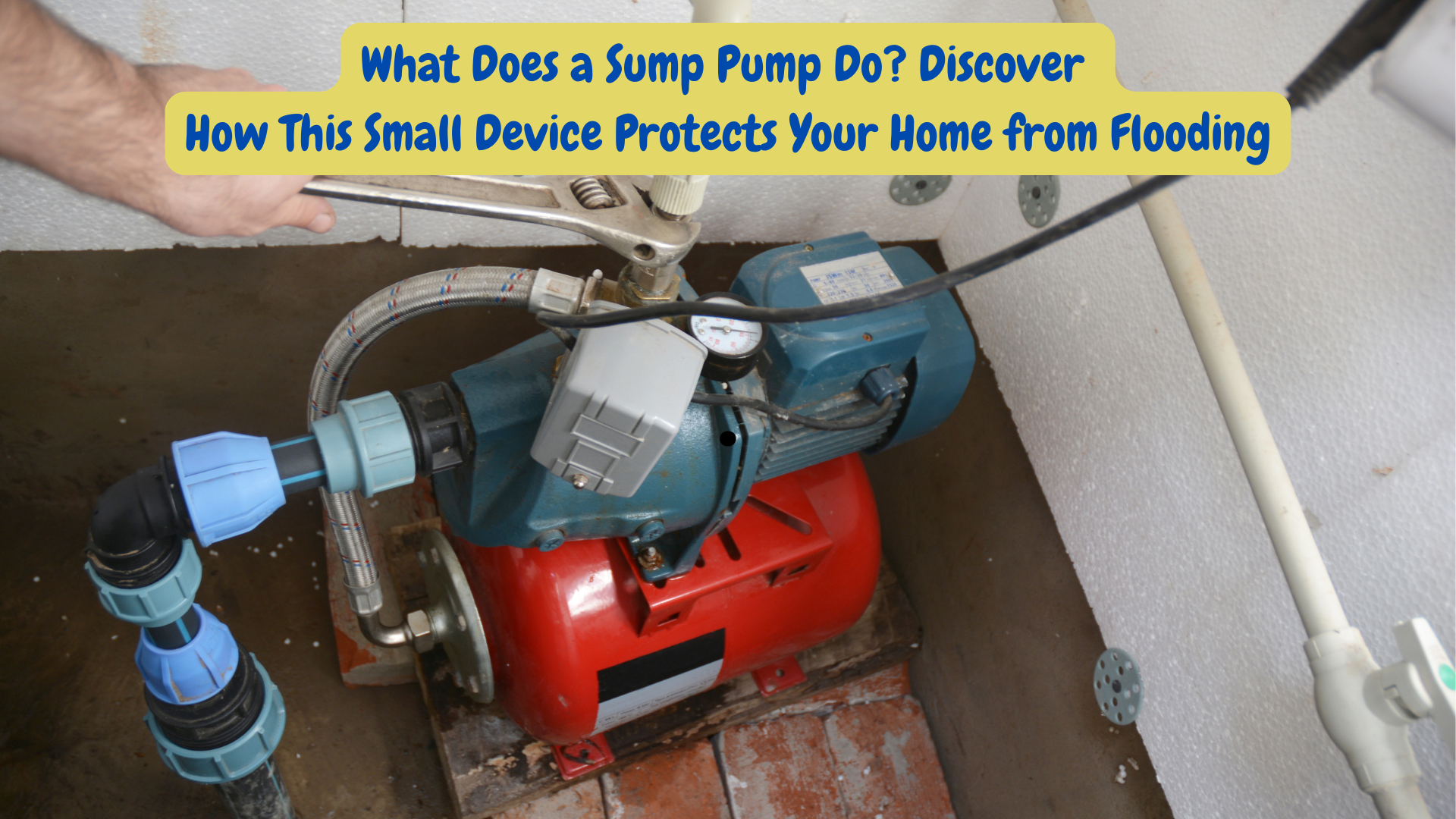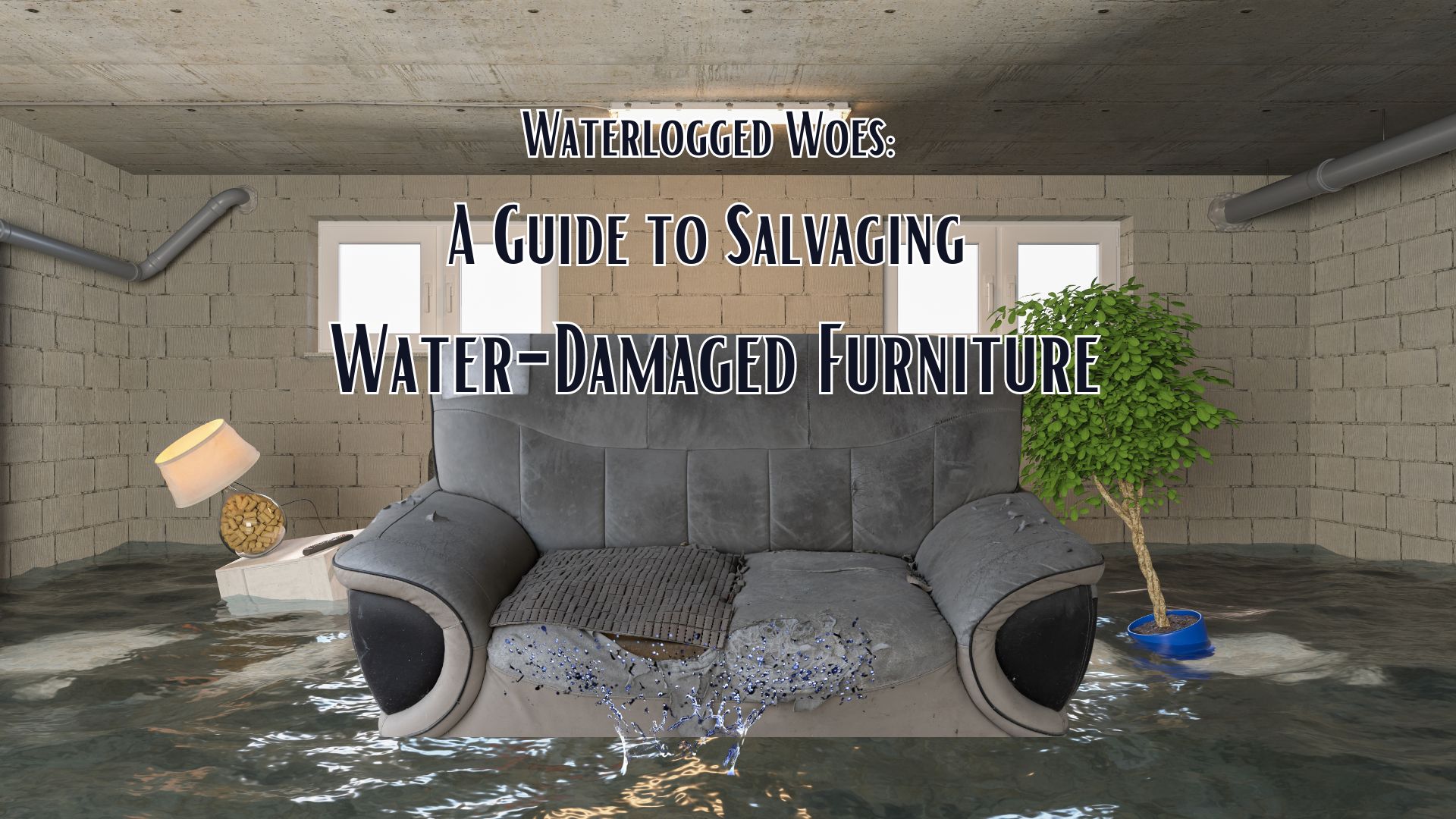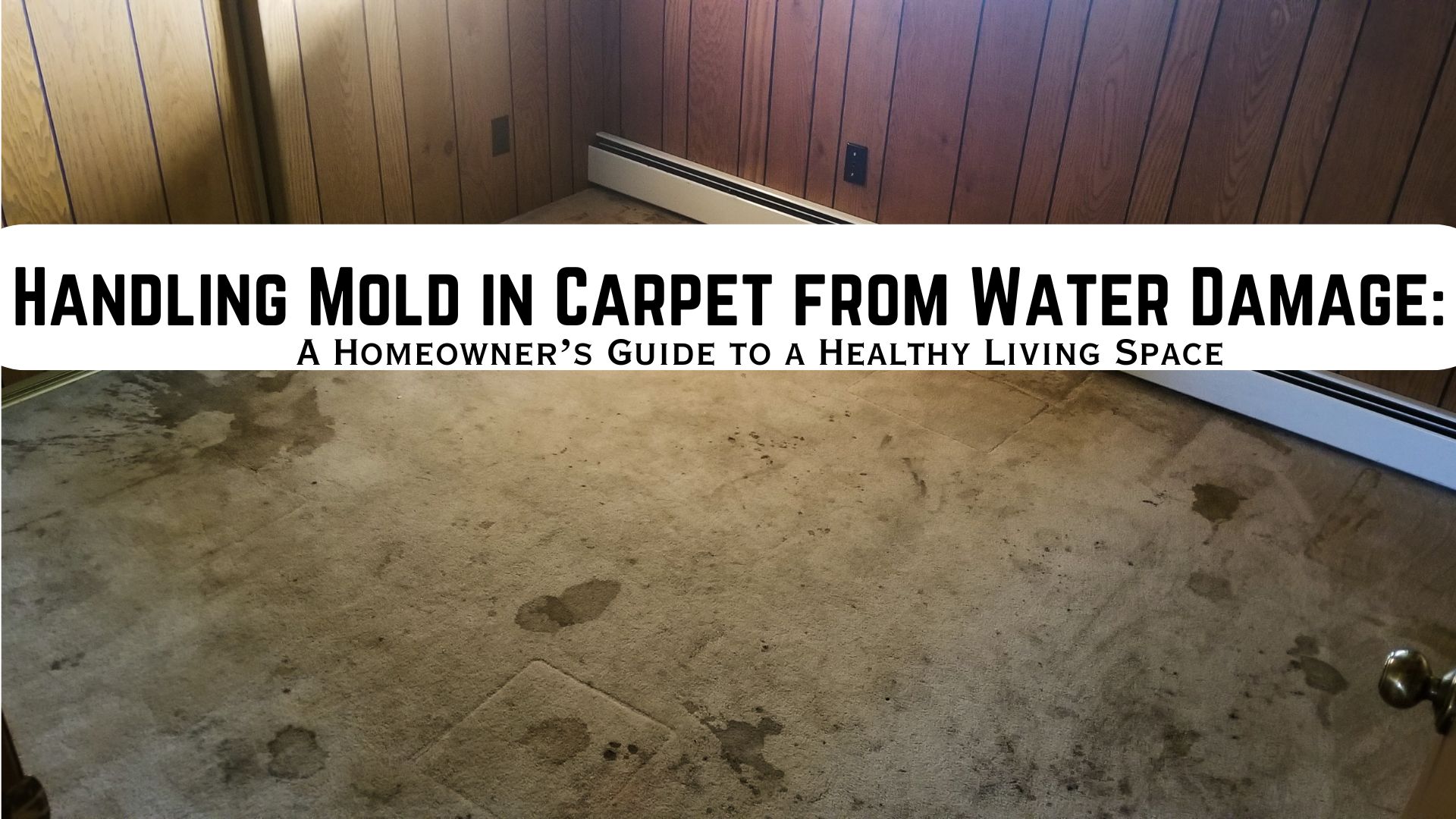
Moldy carpets, a byproduct of water damage, can be a homeowner’s source of stress. Imagine waking up to a damp, musty odor in your living room, only to discover that your carpet—once soft and cozy—is now a breeding ground for mold. Not only is it unpleasant, but mold in carpet from water damage can also pose serious health risks.
So, what can you do about it? In this comprehensive guide, we’ll tackle the problem head-on, exploring how to identify, prevent, and remove mold from your carpet, and how to ensure it never comes back.
Understanding the Threat: Why Mold in Carpet is a Big Deal
What Causes Mold in Carpet?
When water seeps into your carpet—whether from a flood, a leaky roof, or even an overzealous mopping session—it creates the perfect environment for mold to thrive. Mold is a type of fungus that needs moisture, warmth, and organic material to grow. Unfortunately, your carpet provides all three. Once mold spores land on your damp carpet, they begin to multiply, feeding on the carpet fibers and any dirt or debris trapped within.
The Health Risks of Mold in Carpet
Mold in your carpet isn’t just an aesthetic issue—it can be hazardous to your health. Mold releases spores into the air, which can cause allergic reactions, respiratory problems, and other health issues, especially for people with asthma or weakened immune systems. If left untreated, mold can spread beyond the carpet, contaminating other areas of your home and making the problem even more difficult to manage.
Identifying Mold in Carpet: Early Detection is Key
Signs Your Carpet May Be Harboring Mold
Detecting mold in your carpet early can save you time, money, and a lot of headaches. Here are some telltale signs:
- Musty Odor: A persistent, musty smell is often the first sign of mold in carpet from water damage.
- Discoloration: Look for dark or greenish spots on your carpet, especially in areas that have been exposed to moisture.
- Allergy Symptoms: If you or your family members are experiencing unexplained allergy symptoms like sneezing, coughing, or watery eyes, mold could be the culprit.
- Dampness: If your carpet feels damp long after a spill or cleaning, it’s a warning sign that mold may be present.
How to Confirm Mold Presence
If you suspect mold in your carpet, you can confirm its presence by conducting a simple test. Lift a corner of the carpet and inspect the underside for signs of mold growth. You may also want to hire a professional mold inspector who can use specialized equipment to detect hidden mold in your carpet and other areas of your home.
Addressing the Issue: How to Remove Mold from Carpet
DIY Mold Removal: Is It Worth the Risk?
Many homeowners wonder if they can tackle mold in carpet from water damage on their own. While it’s possible to remove small patches of mold yourself, it’s important to weigh the risks. Mold can be dangerous, and improper handling can lead to further contamination. If the affected area is large or the mold has penetrated deep into the carpet, it’s best to call in professionals.
Step-by-Step Guide to Removing Mold from Carpet
If you decide to take on the task yourself, here’s a step-by-step guide to removing mold from your carpet:
- Safeguard yourself: Suit up to prevent exposure to mold spores.
- Ventilate the Area: Open windows and doors to allow fresh air to circulate and reduce mold exposure.
- Remove Excess Moisture: Use a wet/dry vacuum to remove as much water as possible from the carpet.
- Apply a Mold Remover: Spray a commercial mold remover or a mixture of white vinegar and water onto the affected area. For at least 10 minutes, let the mold remover or mixture stay.
- Scrub the Carpet: Use a stiff brush to scrub the moldy area, making sure to reach deep into the carpet fibers.
- Rinse and Dry: Thoroughly rinse the area with clean water, then use fans or a dehumidifier to dry the carpet completely. A damp carpet is a breeding ground for mold, so make sure it’s bone dry.
Professional Mold Remediation: Get Expert Assistance
If the mold covers a large area or if you’re dealing with recurring mold problems, it’s time to call in a professional mold remediation company like Superior Restoration. Experts have the tools and knowledge to effectively remove mold from your carpet and address the underlying cause of the moisture problem. They can also treat your carpet with mold-resistant solutions to prevent future growth.
Preventing Mold in Carpet: Long-Term Solutions
Controlling Moisture Levels
The best way to prevent mold in carpet from water damage is to control moisture levels in your home. Here’s how:
- Fix Leaks Promptly: Repair any leaks in your roof, plumbing, or windows to prevent water from seeping into your carpet.
- Use Dehumidifiers: Keep humidity levels below 60% by using dehumidifiers, especially in basements and other damp areas.
- Proper Ventilation: Ensure your home is well-ventilated by using exhaust fans in bathrooms and kitchens and opening windows when possible.
Regular Carpet Maintenance
Regular carpet maintenance can also help prevent mold growth:
- Vacuum Frequently: Vacuum your carpet regularly to remove dirt, dust, and other organic material that mold can feed on.
- Clean Spills Immediately: Blot up spills as soon as they happen and dry the area thoroughly.
- Steam Clean Annually: Have your carpet professionally steam cleaned at least once a year to remove deep-seated dirt and potential mold spores.
Mold-Resistant Carpets
If you’re replacing your carpet, consider opting for mold-resistant carpets. These carpets are made from synthetic fibers that resist moisture and are treated with anti-microbial agents that prevent mold growth.
Objection Handling: Common Concerns About Mold in Carpet
“Can’t I Just Replace the Carpet?”
Some homeowners might consider replacing a moldy carpet as a more convenient solution. While replacing the carpet will remove the visible mold, it doesn’t address the underlying moisture issue that caused the mold in the first place. If you don’t fix the moisture problem, the new carpet may also develop mold.
“Is Mold in Carpet Really That Dangerous?”
It’s natural to question whether mold in your carpet is truly a serious issue. The answer is yes—mold in carpet from water damage can pose significant health risks, especially for vulnerable individuals. Ignoring the problem can lead to chronic health issues and further damage to your home.
Open Loops: What About Mold in Other Areas?
While this guide focuses on mold in carpet from water damage, mold can also grow in other areas of your home. Stay tuned as we explore how to deal with mold in walls, ceilings, and more in future articles.
Final Thoughts: Take Action Today for a Mold-Free Home
Mold in carpet from water damage is a problem that requires prompt and decisive action. Whether you choose to tackle the issue yourself or hire professionals, the key is to act quickly and thoroughly. By understanding the causes, recognizing the signs, and implementing preventive measures, you can protect your home and your health from the dangers of mold. A mold-free carpet is key to a healthy living space for you and your family. Take control, and enjoy peace of mind knowing your home is mold-free.
For emergency water damage services and mold remediation, please contact Water Damage Temecula.



